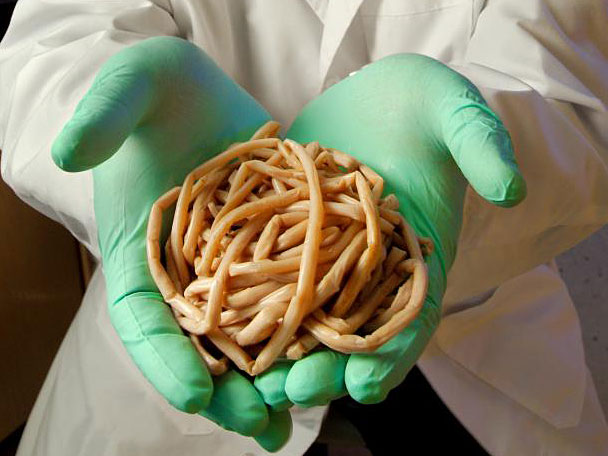Roundworms are a contagious biohazard. They can cause serious infection to humans, posing a real threat to human well-being.
Types of Biohazards
Generally speaking a biohazard is considered an organism or a side affect from an organism that have the ability to cause harm to human beings.
The following items can be considered biohazards; parasites, bacteria, various toxins developed by organisms and even viruses.
Did you know that numerous people today are suffering from the affects of a biohazard and they don’t even know it! In this day in age it is easy to say that most diseases humans suffer from are caused by various biological hazards.
Diseases Causes by Biohazards
Interestingly enough diseases such as HIV, hepatitis C/B, and measles are all causes by viruses. Additionally, bacteria has been known to cause tuberculosis, reoccurring fever, cholera, and many more. Also, you should know that parasites are also responsible for causing numerous diseases and symptoms that humans suffer from today.
How to Contract Parasites
First, lets take a look at parasites. A parasite is considered by an organism that is living on or inside of another organism. They depend on their host organism to live and survive, unfortunately they cause severe harm or damage to their host organism. Sometimes the damage can be so severe that is can even cause death to their host organism. Parasites can be both internal or external.
If a parasite is external, it lives on the organisms hair or skin. An example of an external parasite is a mite which eventually can cause scabies. An internal parasite makes its home inside in the body, sometimes in your intestines or it can make its home in various organs. Some internal parasites include, pin worms, helminths, and protozoa.
If you contract a protozoan parasite is will enter your body through your mouth or by an infected insect bite. Have you ever hear of Malaria? This is a great example of a protozoan parasite that is spread through infected insect bites. An example of a protozoan parasite that is spread through drinking water or food that is polluted include, giardiasis and amoebic dysentery.
Internal Parasitic Infections
A example of a parasitic worm that lives inside of a human body is called a helminths. Unfortunately, the helminths can enter the body in a variety of different ways, including, insect bites, through food and water, and fecal-oral. There are three categories of Helminth parasites which include, flukes, roundworms, and tapeworms.
A tapeworm is easily spread because it enters the body through food, usually in undercooked meat or water/food that is polluted with feces.
Examples of diseases roundworms cause include, hookworm, ascariasis, filariasis, and trichinosis. If you become infected with a fluke you can get schistosomiasis (bilharzia). This is spread by swimming or standing in water that have immature versions of the fluke and is spread through snails as a host.
How Biohazards Spread
Common ways biological hazards spread and are contracted is from humans working with or contacting infected humans and animals. If for some reason you come in contact with a body fluid or waste that is contaminated with a biohazard, there is a chance it will spread to you.
Common places biological hazards spread are hotels, hospitals, veterinary offices, restaurants, laundry services, labs, nursing homes and more. Unfortunately, coming in contact with a biohazard can happen at work, school, or even in your home. That is why it is always import to practice safe hygiene.
How to Prevent the Spread of Biological Hazards
Paying attention to biohazards is very important to protect your health and those around you. If is very important that you take precautionary steps to ensure that your work area or home is clear of biohazards.
Ways to easily remove biohazards include; handwashing, cleaning of workspace and home include tools or shared community items, and if necessary wear proper safety equipment when working.
Follow these three simples steps to help control biological hazards:
Step 1: Always determine the hazard in the workplace or home.
Step 2: Analyze the level of risk the biological hazard exposes you to.
Step 3: Immediately dispose of the biological hazard to protect yourself and those around you.
Similar Posts:
- Why Are Flies So Annoying?
- Is A Zombies Apocalypse Possible? Should I Prepare Myself?
- Why Do Titans Eat Humans: Reference From The Attack On Titans Anime
- Do Dogs Have a Sense of Time?
- Are Insects Animals? What Makes It So?
- Why Does My Tongue Feel Weird?
- Why do Whales Explode?
- How Much Are Sugar Gliders At Petsmart? (All You Need To Know)
- Question Of The Universe: Is A Worm An Insect?
- Why Does The Sun Make You Tired?

